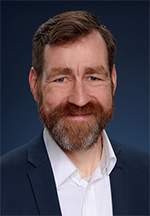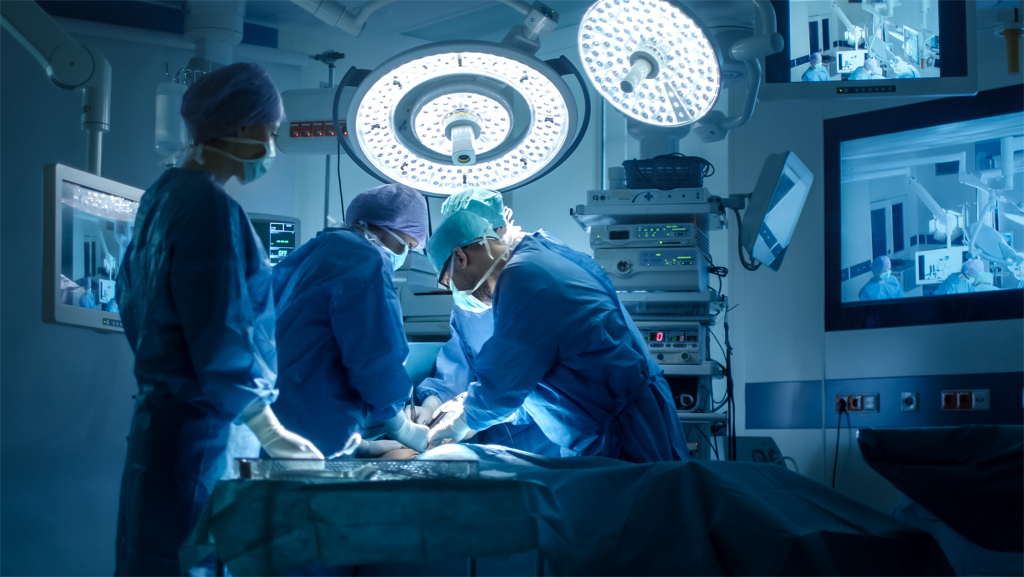AWS for Industries
The Pathway to better Surgical Care with Operating Room Analytics on AWS
Blog is guest authored by Dr. André Sander, CTO at ID Berlin and Roland Kopetsch, GM at SectorCon
Surgical care is an essential part of healthcare. Yet, the growing volume of surgical procedures is making capacity and delivery of surgical services a major challenge for health systems. Using bio-signal data, advanced sensors and operating room analytics could help solve these challenges.
Improving Surgical Care with Operating Room Analytics
In operating rooms (OR), vital signs are generated by medical devices on an impressive scale and at a high clock rate. In most cases, however, these health data points and values do not go beyond the display of the devices for practicing anesthesiologists. The potential value of these OR medical devices data through machine learning and real-time inference is not realized.
In the clinical setting, the interoperability of medical devices is still largely unexplored. Often the interfaces do exist on OR devices. However, in many cases, devices are only accessible in the manufacturer’s own communication protocols.
To address these challenges, the cooperation partners Charité Universitätsmedizin Berlin, Technische Universität Berlin, SectorCon, ID Berlin initated the SmartOxy project. By the end of 2023, the Berlin-based consortium will have developed a novel and innovate solution based on highly integrated sensor and cloud-based technology powered by Amazon Web Services (AWS). This project is supported by the Federal Ministry of Economic Affairs with a funding of one million Euros.
The SmartOxy project aims to significantly improve the intensive medical monitoring of patients undergoing particularly severe surgical interventions on the aorta. It will create a non-invasive sensor system and an associated measurement procedure for monitoring regional blood flow and oxygen supply. As a clinical use case, the monitoring of the spinal cord during surgical interventions on the aorta is to be realized—especially in the treatment of thoracic and thoracoabdominal aortic aneurysms (TAA/A). The SmartOxy project should help to significantly reduce the risk of reduced blood flow and thus damage to the spinal cord.
At present, there is no clinically available solution for precise perioperative monitoring of local perfusion of the spinal cord. Accordingly, aortic interventions are associated with high risks, and the affected individuals expose themselves to the risk of critical ischemia. Referring to recent research, an incidence of spinal cord ischemia (SCI) during aortic repair occurs in 3.6% of cases. In light of this, a combined sensor system consisting of a reflectance pulse oximeter, as well as sensor systems for measuring local pressure fluctuations on the spinal surface, will be implemented.
Project Overview
The SmartOxy project is developing a cloud-based monitoring platform solution in which data is collected from the operating room using a mobile device and transmitted wirelessly to the AWS environment. AWS data analytics services are used for processing and insights generation based on high-frequency sensor data and sharing the insight interpretations to medical practitioners in near real-time. The results of the analysis will be made available to users with minimal latency through existing clinical information systems.
Unlike other data-intensive and critical high-technology domains, intensive care anesthesia has a disproportionately high innovation backlog. This is not due to shortcomings in medical expertise, but due to the lack of data that is available for the application of medical expertise.
In the field of intensive care medicine in particular, existing medical devices generate a large amount of valuable data on many vital parameters. However, the monitoring of patients during operations on the basis of this data only occurs through the observation of the attending physicians by using the monitors of the respective devices. The potential for supporting near real-time evaluations and analyses for the detection of multiparametric correlations and trend developments are completely untapped.
An algorithmically implemented, early detection of critical situations of the patient is theoretically possible and can be realized in practice. A prerequisite for this, however, is the merging of the already existing vital parameter data sources at device interfaces to form an overall picture. However, a lack of interoperability of the various device interfaces with proprietary protocols makes it difficult to create desired databases for near real-time evaluation.
The SmartOxy project, would not only combine sensor technology as a basis of new diagnostic possibilities, but also incorporate the existing data streams from the operating room for up-to-date patient monitoring.
Figure 1 – High-level Architecture
For an example, Figure 1 shows the high-level architecture of an interface data for a connected anesthesia device. Such values are vital parameters of primary interest for anesthesia in the operating room, since anesthesia devices, along with cardiovascular monitors, are the main basis for interpreting the patient’s condition. Using specially developed adapter software, communication with the devices is opened up in the proprietary communication protocol.
AWS Partner SectorCon is contributing the sensor technology to be developed as well as the system ConCardiac AIR. With a ConCardiac gateway, data streams from up to eight different devices, as well as ConCardiac sensors, can be combined synchronously and made available for near real-time evaluation with AWS data analytics services.
The SmartOxy team has now succeeded for the first time in expanding its non-invasive pressure sensor technology to include an optical measurement principle. This is a special method of reflection pulse oximetry. Contrary to other common methods, light of different wavelengths is emitted into the tissue by means of different LEDs. Reflected light is detected and allows conclusions to be drawn about oxygen saturation at various depths in the tissue.
The method for measuring the oxygen content in the blood, which was developed and patented by the department of Micro and Precision Devices at the Technical University of Berlin, is also based on algorithmic signal processing. In a first demonstration, the combination of both technologies led to positive test results, allowing patient trials to start at Charité.
Figure 2 – Hybrid Sensor for pressure and oximetry
AWS Partner ID Berlin is supporting this project with know-how expertise for interoperability with Health Level 7 International (HL7) FHIR standard, which is an essential component of the SmartOxy project. The ID Berlin partner team is a specialist in the field of medical terminologies and ontologies and has been involved in the analysis of medical texts for almost 40 years. They have integrated with clinical processes in a 1000+ facilities in Europe.
AWS is a Gold Member of HL7 International with a commitment to improving global health data interoperability.
Conclusion
Leveraging new technologies and near real-time data insights in the operating room can save life. However, the potential value of enriching medical technology devices through data analysis and real-time inference is currently not realized. Pioneering with new ideas and driving innovations to support immediate response of medical practitioners in the operating room is pivotal.
Utilizing architecture built on AWS, it will be possible to process live data directly from the OR, in the cloud, and use the cutting-edge possibilities of this approach. In addition to the dynamic scalability to ensure high-performance data processing, it is the fast and flexible option for adapting the algorithms that makes patient treatment safer and more successful. The development of the non-invasive patient monitoring of the future requires the interdisciplinary cooperation of all actors involved from medicine, industry, politics, technology and infrastructure.
To learn more about the project or AWS healthcare solutions, please reach out to the healthcare team.
Further Reading
- Amazon HealthLake Analytics
- New Amazon HealthLake capabilities enable next-generation imaging solutions and precision health analytics
- Powering healthcare innovations with AWS
- AWS HL7 Case Studies and White Papers
 Dr. André Sander studied medical informatics at the Technical University of Ilmenau and earned his doctorate at the Charité in the field of medical sciences. He has been working for many years with medical terminologies and ontologies. At ID Berlin, he is the CTO, leads the software development and is responsible for modern software architectures.
Dr. André Sander studied medical informatics at the Technical University of Ilmenau and earned his doctorate at the Charité in the field of medical sciences. He has been working for many years with medical terminologies and ontologies. At ID Berlin, he is the CTO, leads the software development and is responsible for modern software architectures.
 Roland Kopetsch is the GM at SectorCon and has worked for more than three decades as an engineer and entrepreneur. He has partnered on innovation projects and collaborations in the technical and scientific environment as well as in the support of social and political shaping processes. Based in Germany, he has valuable connections to companies within industry, medical, technology and digitization, as well as to federal and state ministries, universities and, in particular, health research.
Roland Kopetsch is the GM at SectorCon and has worked for more than three decades as an engineer and entrepreneur. He has partnered on innovation projects and collaborations in the technical and scientific environment as well as in the support of social and political shaping processes. Based in Germany, he has valuable connections to companies within industry, medical, technology and digitization, as well as to federal and state ministries, universities and, in particular, health research.


